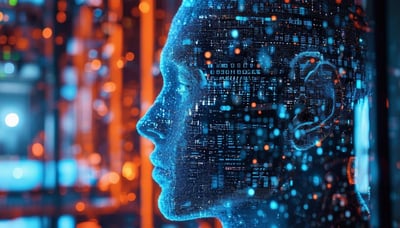Over the past year, our engineering team has gone through one of the most profound changes I’ve seen in my career.
We’ve moved from using AI tools to help engineers code faster… to a world where AI is now at the centre of how we design, build, and ship software.
What started as a Copilot-style “AI assistant” experiment has become a fully AI-first development process, and it’s changing everything — speed, quality, and even what it means to be an engineer.
From Driver to Navigator
When we began, AI was just an assistant, and the human was the driver — the engineer still wrote the code while AI offered hints and completions.
Today, as our Director of Engineering Alastair McClelland puts it:
“An engineer is now the navigator — and AI is the driver.”
He’s right. Engineers now describe what needs to happen, why it matters, and the constraints. The AI then implements, tests, and iterates.
In essence, we were doing spec-driven development before the phrase became popular. The engineer’s craft has shifted from typing code to expressing intent.
The analogy of the driver and navigator works well because a good navigator knows when to intervene and take control. They also reflect on why that intervention was necessary and offer better guidance for the future.
What’s Changed in Practice
This transformation has re-shaped how our teams work:
- Prototyping: We’re now building and validating ideas up to 10× faster
- Production delivery: Roughly 3× faster while maintaining strong quality
- Test coverage: Typically double previous levels — even prototypes are tested
- Adoption: Around half our engineers are already fully AI-first; the others are following on that adoption curve.
We even track token usage as a measure of AI engagement and productivity. It’s remarkable how much of our “thinking” time is now spent collaborating with AI, not fighting against it
New Roles, New Mindsets
AI has changed the shape of engineering work itself.
Engineers are now more architectural and product-focused — defining systems and solving real customer problems rather than implementing predefined tasks.
Code reviews have evolved too. They’re no longer about catching small issues, They’re about shared learning and improvement, because AI already handles syntax, structure, and linting.
And while we still need discipline and testing, our focus now is on better prompts, clearer specs, and smarter feedback loops for the AI.
As Alastair says,
“The best engineers are becoming the best communicators — the ones who can describe intent precisely to both humans and machines.”
What We’ve Learned
Here are the biggest lessons from our AI-first transformation:
- Quality at speed is possible. You can go faster and get safer releases if you embed testing from the start.
- AI needs context, not micro-managed. Success depends on clear specs, structured data, and tight feedback loops.
- Upskilling never stops. AI tooling evolves monthly; so do the skills to use it well.
- Change management matters. Rapid evolution demands a growth mindset and a culture that celebrates experimentation.
The Celerity Project: Engineering for the AI Era
To make this sustainable, we launched The Celerity Project — our initiative to rebuild our development environment around AI.
It focuses on:
- Monorepo context-sharing across many apps
- Spec-driven development using OpenSpec and ADRs
- Embedded “skills” as /slash commands inside projects
- Strongly-typed, LLM-friendly implementations
- Mermaid + Markdown for clear, machine-readable documentation
Every decision is about making our systems legible to both people and AIs — keeping our velocity high without sacrificing quality.
Where We’re Headed
We expect broad engineering to stabilise at about 2–3× faster delivery, with prototypes continuing to hit up to 10X.
But the real change isn’t just speed — it’s mindset.
Our engineers are no longer just writing code; they’re training a digital workforce. They’re designing systems that can explain themselves, test themselves, and evolve continuously.
And they’re thriving in that environment.
As Alastair summed it up perfectly:
“We’re not replacing engineers with AI — we’re redefining what engineering is.”
Final Thought
The AI revolution in software development isn’t about automation; it’s about amplification.
When we combine the clarity of human intent with the precision and scale of AI execution, we don’t just move faster — we build better.
Want to become an AI-first data engineer?
We've been AI-first engineering the first AI-first, AI-native data engineering AI Agent named Metis. (Whew - that's a lot of 'AI.')
If you want to check it out, get started with native CI/CD for Snowflake. It's free!
Many thanks to my thought partner for this article, Alastair McClelland.

 By
Guy Adams - CTO, DataOps.live
By
Guy Adams - CTO, DataOps.live




.png?width=400&height=250&name=image%20(1).png)